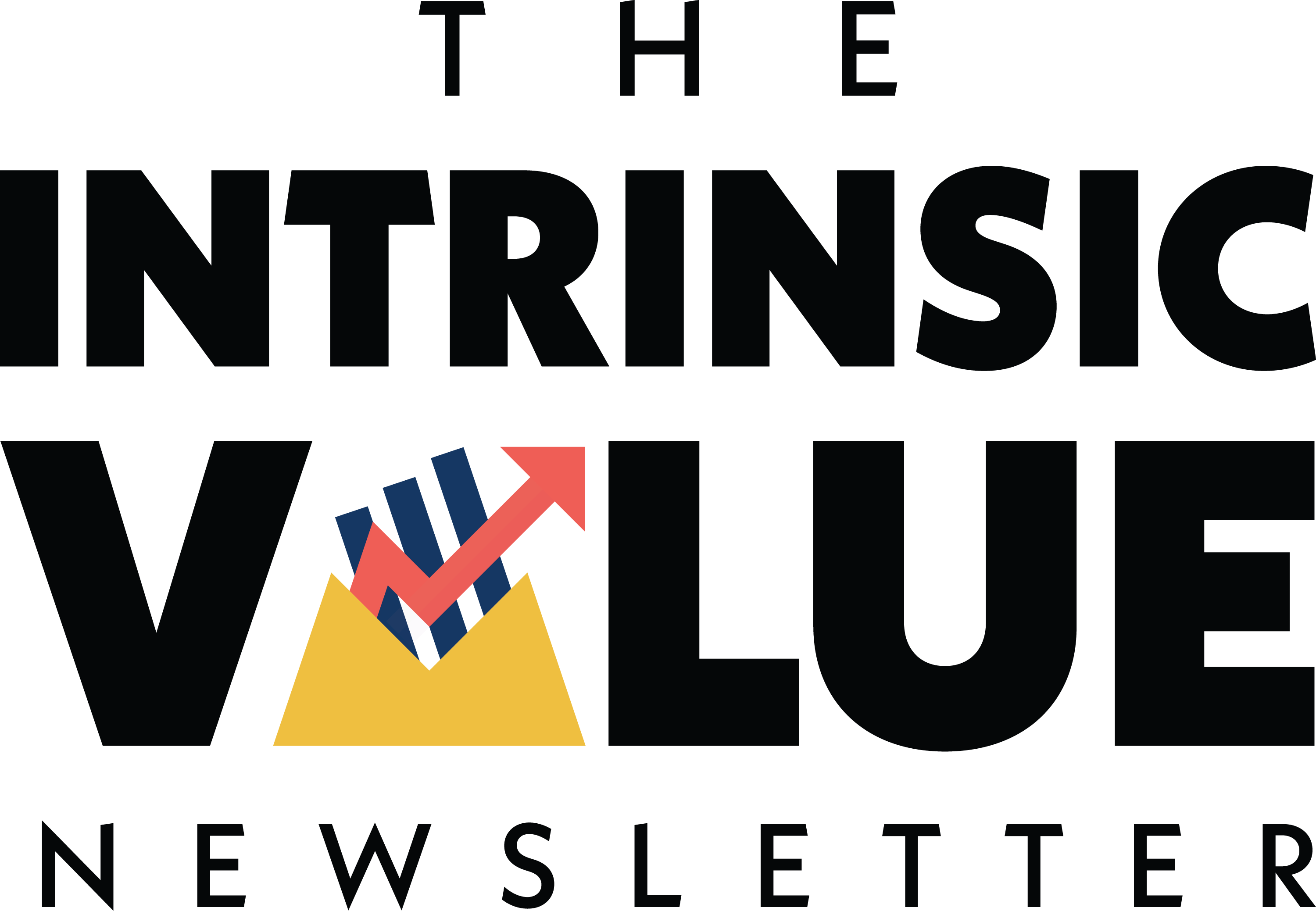Underdog Story

Hi, The Investor’s Podcast Network Community!
Google’s rise over the last two decades is remarkable.
In 2002, Yahoo had the chance to acquire the startup for $5 billion. They said no. It was the same year many doubted Google could compete with Yahoo.
One 2002 New York Times headline stated: “Google’s Toughest Search Is for a Business Model.”
💭 Google found a business model, all right. Today, Google has the last laugh: Last year, it generated over $220 billion in ad revenue alone.
— Matthew & Shawn
Here’s today’s rundown:
Today, we’ll discuss the three biggest stories in markets:
- What’s behind the market’s wild overreactions
- How NYC could unleash a transportation revolution
- Are small caps primed for a comeback?
All this, and more, in just 5 minutes to read.
POP QUIZ
Which company dominated the search engine space the most 20 years ago? (Hint, it’s not Google; read to the bottom to find the answer!)
Get smarter about valuing businesses in just a few minutes each week.
Get the weekly email that makes understanding intrinsic value
easy and enjoyable, for free.
Few souls seek uncertainty, and investors are no different.
Is it just us, or have investors lately swung wildly in one direction and then the other, leading to big moves in the market?
One day (or week), investors fear more rate hikes and persistent inflation. Another week, like this one, good inflation news swings what could be an overreaction upward.
In the fast lane: So, we swung quite drastically from a higher-for-longer narrative to soft landing, rate cuts, and the possibility of deflation. The S&P has now had its best two-week stretch since October 2022.
- As Fidelity’s global head of macro puts it, “In fundamental terms, this is a much slower [economic] cycle” as rates have yet to cause a big growth slowdown. “In narrative terms, it’s a much faster cycle.”
To be sure, markets have swung between extremes for as long as they have existed. But the pace has picked up in recent years. One strategist pointed out that the Fed has made at least six “dovish pivots,” all later reversed.
Here are a few structural reasons why there could be heightened reactions (aka volatility) recently:
- The pandemic in 2020 sent markets into a nosedive, only to recover rapidly.
- The highest inflation in about 40 years peaked in mid-2022.
- The failure of American banks in early 2023.
- War in Ukraine and the Middle East have sent shockwaves through markets.
All of the above have driven rapid moves in bond yields, which impact stocks and other assets. As the chart below shows, the implied volatility of U.S. Treasurys has been the highest average of any time outside the post-dotcom recession and the 2008-09 financial crisis.
- In other words, we’re seeing many rapid swings for an economy that’s holding steady.
- Causes for worry have been elevated lately, possibly because society is becoming more near-term-minded, with shorter attention spans and time horizons. There’s also the problem of extrapolating moves in the economy to markets.
Why it matters:
Perhaps investors are also unsure of the long-term. Will it be a new environment of higher rates or worry of an inflation comeback? Or are we returning to a low-rate world and a central bank concerned about deflation?
- Part of the beauty of markets (and life) is that nobody knows the future. The world is full of endless uncertainty and possibilities.
If one thing’s for sure, this soft-landing narrative might last a few weeks or a few months, but it will likely end at some point — only to turn to a new story, maybe renewed recession fears or the “higher for longer” narrative.
When that happens, we can count on another big market swing.
Welcome to The Assist’s 2023 Corporate Holiday Gift Guide!
Discover a handpicked collection of this season’s hottest finds, ranging from cutting-edge tech to luxurious indulgences, guaranteed to delight your team and clients.
With options for every budget, we’ve got your holiday shopping covered – consider it checked off your to-do list! ✅
🚗 NYC’s Congestion Pricing Could Unleash Revolution

Photo by Joseph Chan on Unsplash
A transportation revolution could be upon us.
Next year, America’s biggest city, New York, will launch a congestion pricing program.
If you drive into Manhattan during rush hour, you’ll pay between $9 and $23 — in addition to current tolls. The city wants to disincentivize drivers from entering the busiest streets. The goal: alleviate traffic.
- Fewer drivers mean more passengers on public transportation, which means more revenue for the city.
- What’s important here is what this could mean for other cities nationwide. Officials in Boston, Los Angeles, San Francisco, Seattle, and Portland are all considering emulating NYC, assuming it goes OK in the Big Apple.
On the road again: Americans drive about 40 miles a day, up from about 20 in 1969, thanks to the rise in suburbanization.
- Driving on most roads is “free” on paper because there’s no real price. However, other toll roads and bridges collect money.
- NYC’s congestion pricing is like buying an airline ticket around Thanksgiving or trying to catch an Uber at a busy time (surge pricing). Tolls will be collected mostly via E-Zpass.
- Similar initiatives have been implemented in the past, including Singapore in 1975, Norwegian cities in the 1980s, London in 2003, and Milan in 2008.
There are plenty of trickle-down impacts of traffic and congestion. Each time, congestion pricing worked, fewer people drove into city centers, congestion fell, air quality improved, residents’ health outcomes improved, and the cities raised money to invest elsewhere.
Sounds like a no-brainer for virtually every city, right?
Why it matters:
Mayors and economic leaders want people downtown, not big backups, which likely only makes people less willing to visit cities.
- For decades, big cities like New York and Los Angeles have struggled with congestion, which clogs neighborhoods with smog and frustration.
- In the future, scientists and techies hope to develop autonomous vehicles and other artificial intelligence tools that will drastically reduce traffic, if not alleviate it altogether.
Plenty at stake: Health impacts aside from all the smog, sitting in traffic wastes a lot of time and money. Per the World Economic Forum, the total cost of lost productivity caused by congestion was about $87 billion in 2018 alone. That year, the average New Yorker spent 133 hours in traffic, costing $1,859 in lost productivity, per the study.
- Since more than half of the world’s population lives in urban areas — expected to rise to 70% by 2050 — altering our transportation systems could be key for Americans’ health and economic viability.
MORE HEADLINES
☁ Alibaba sheds $20 billion after scrapping plan to spinoff its cloud business
🐼 China will send new pandas to the U.S. as a gesture of goodwill after Xi’s visit with Biden
💰 The U.S. cities where you need to earn more than $200,00 to buy a home
❌ Amazon cuts several hundred jobs in ‘Alexa’ division
👋 Sam Altman leaves OpenAI as CEO after board review
📚 Times’s 100 must-read books of 2023
Small-cap stocks are the little guys on Wall Street. These aren’t your Amazons or Apples, which have driven the S&P 500 higher. No, these companies fall in the “everyone else” category: They trade on major stock exchanges but aren’t big enough to be included in indexes like the S&P 500.
They fall into a classification group known as the Russell 2000 Index, and 2023 hasn’t been a good year for them.
The median market capitalization for companies in the Russell 2000 is just $950 million. Individually, they’re small, but together, are they strong?
- Well, no, at least not this year — as you’ll see in the chart below, large-cap companies in the S&P 500 have trounced their smaller counterparts.
But can the Russell 2000 strike a David vs. Goliath comeback in 2024? Greg Tuorto of Goldman Sachs thinks so.
- Higher interest rates have impacted smaller companies the most, as they typically have less pristine balance sheets, meaning financing comes at greater costs.
- Add to that no shortage of AI hype, where many perceive they must be invested in big companies like Google or Nvidia to benefit from the emerging technology. Consequently, small caps have been overlooked and disregarded this year, per Tuorto.
- Though small-caps tend to be riskier, with less financial padding to absorb economic shocks, they also usually have the most growth upside — the market strategists at Putnam Investments expect earnings for the Russell 2000 to rise nearly 25% in 2024, compared to just 11% across S&P 500 companies.
Why it matters:
While “small caps haven’t been a fun place to be in 2023,” Tuorto argues that investors are wrongly dismissing how AI advances will benefit small companies, too.
He adds, “We think that small caps are a great place to access disruptive innovation because these companies have significantly more leverage to the mega-trends that are out there today.”
- And with the Fed easing on rate hikes, that removes another major headwind facing these companies.”
- Tuorto concludes, “It’s time for small caps to play catch-up.”
Read more
— Despite TikTok being the most popular mobile app globally, you all prefer YouTube and Instagram.
— One corporate-grind-focused reader commented, “Outlook.”
— We tossed our votes in for Spotify (for music and podcasts!)
TRIVIA ANSWER
Back in 2003, the search engine market was more competitive. While Google ranked high with almost 29% of search engine traffic in the U.S., Yahoo had the biggest share at 29.5%, with MSN (27.6%) and AOL (18.4%) following closely behind.
See you next time!
That’s it for today on We Study Markets!
Enjoy reading this newsletter? Forward it to a friend.
Was this newsletter forwarded to you? Sign up here.
All the best,
P.S. The Investor’s Podcast Network is excited to launch a subreddit devoted to our fans in discussing financial markets, stock picks, questions for our hosts, and much more!
Join our subreddit r/TheInvestorsPodcast today!















